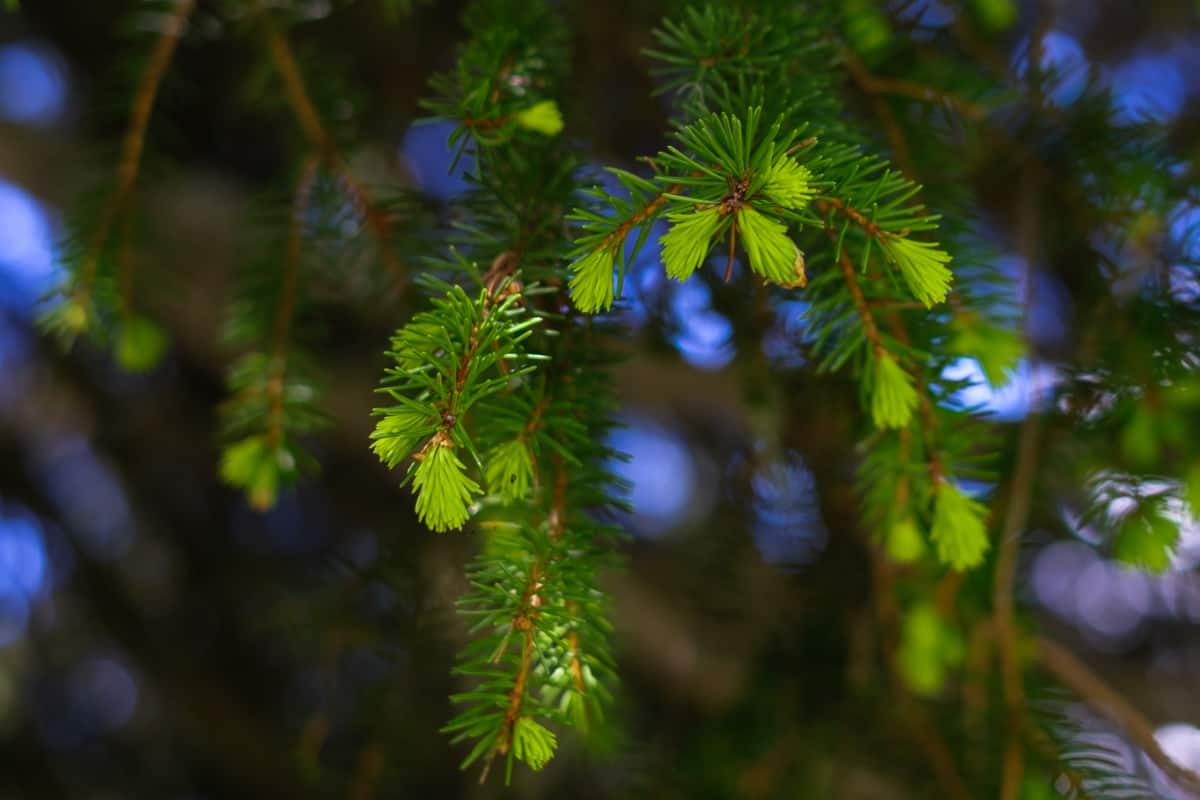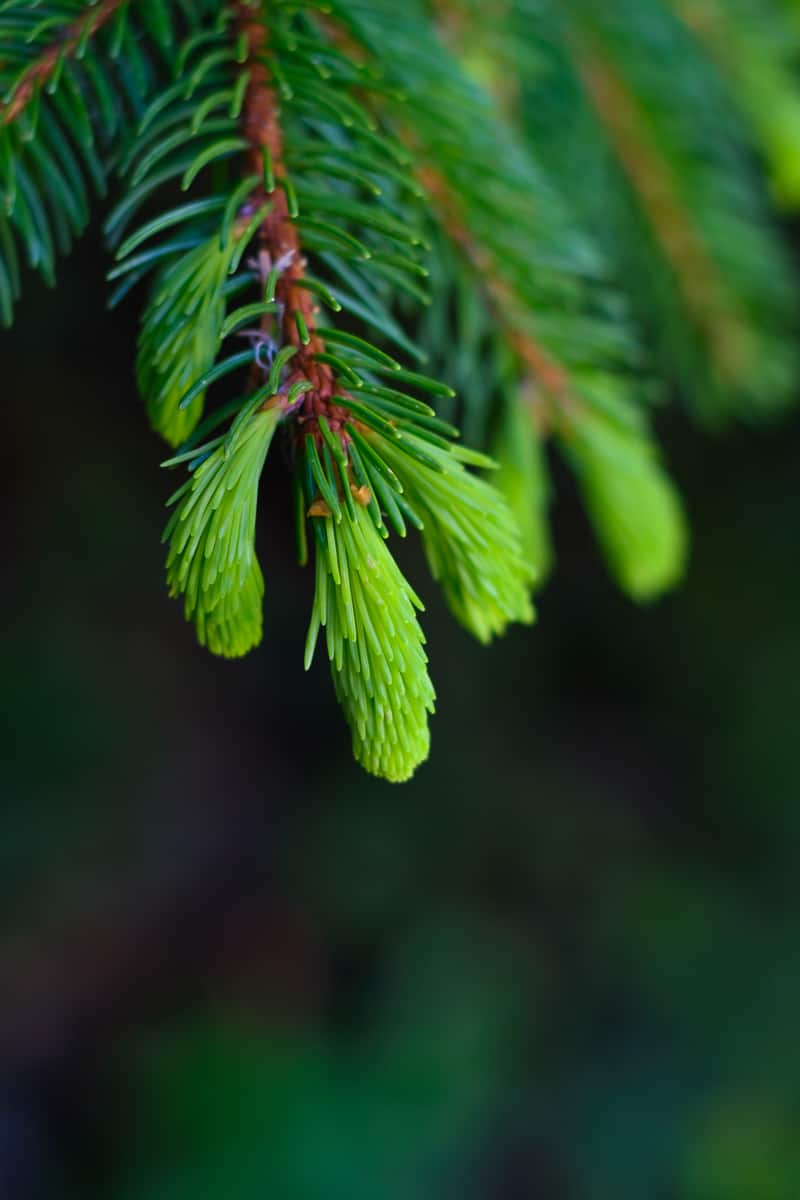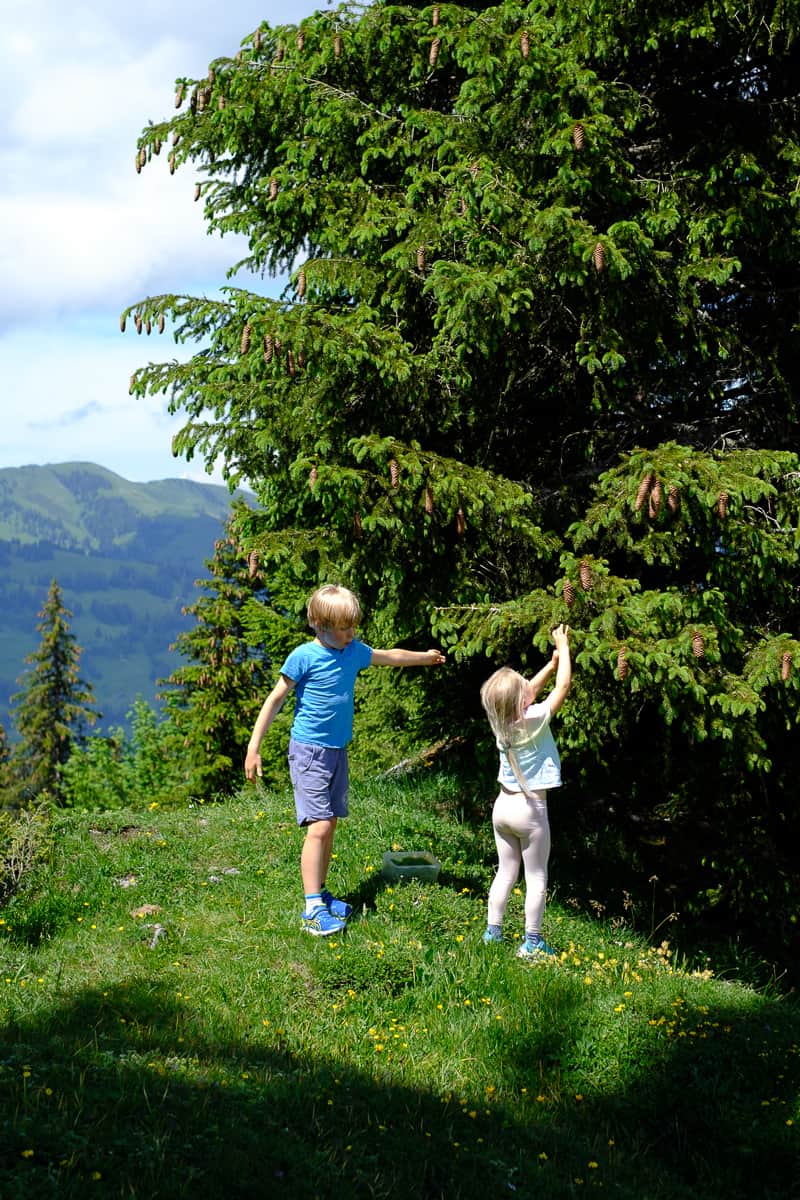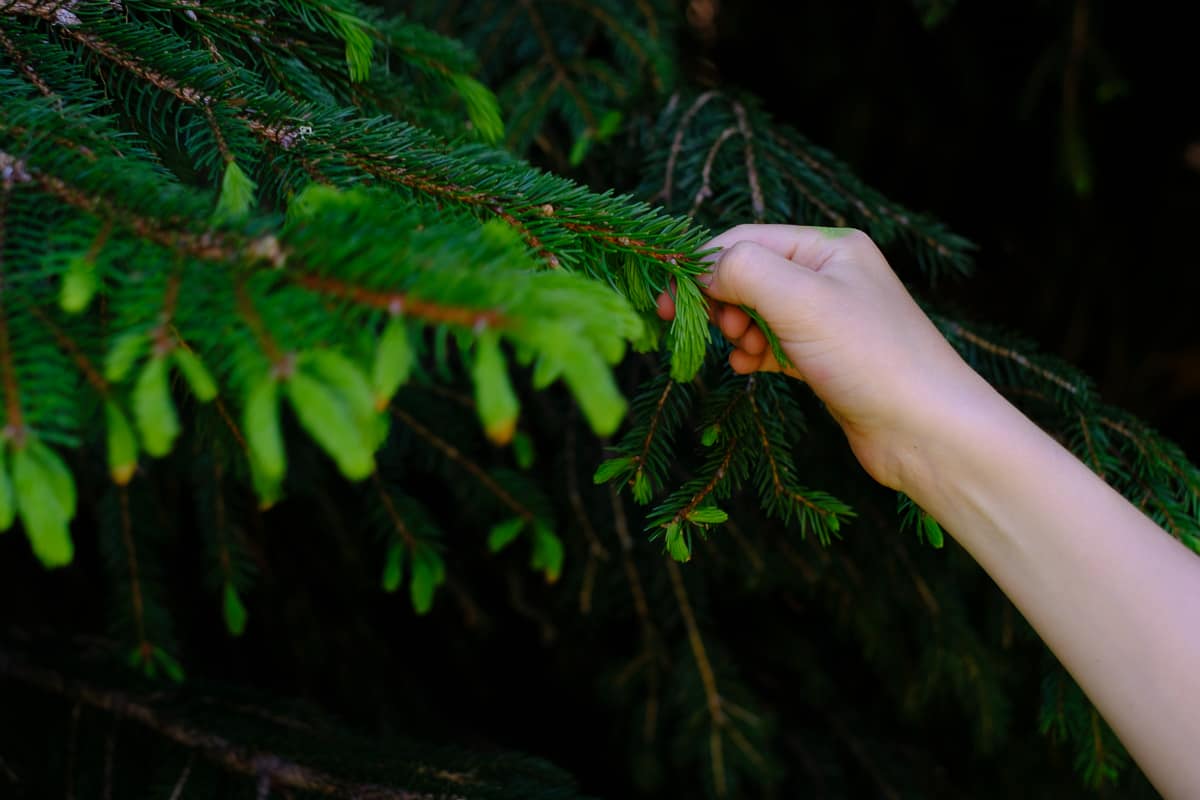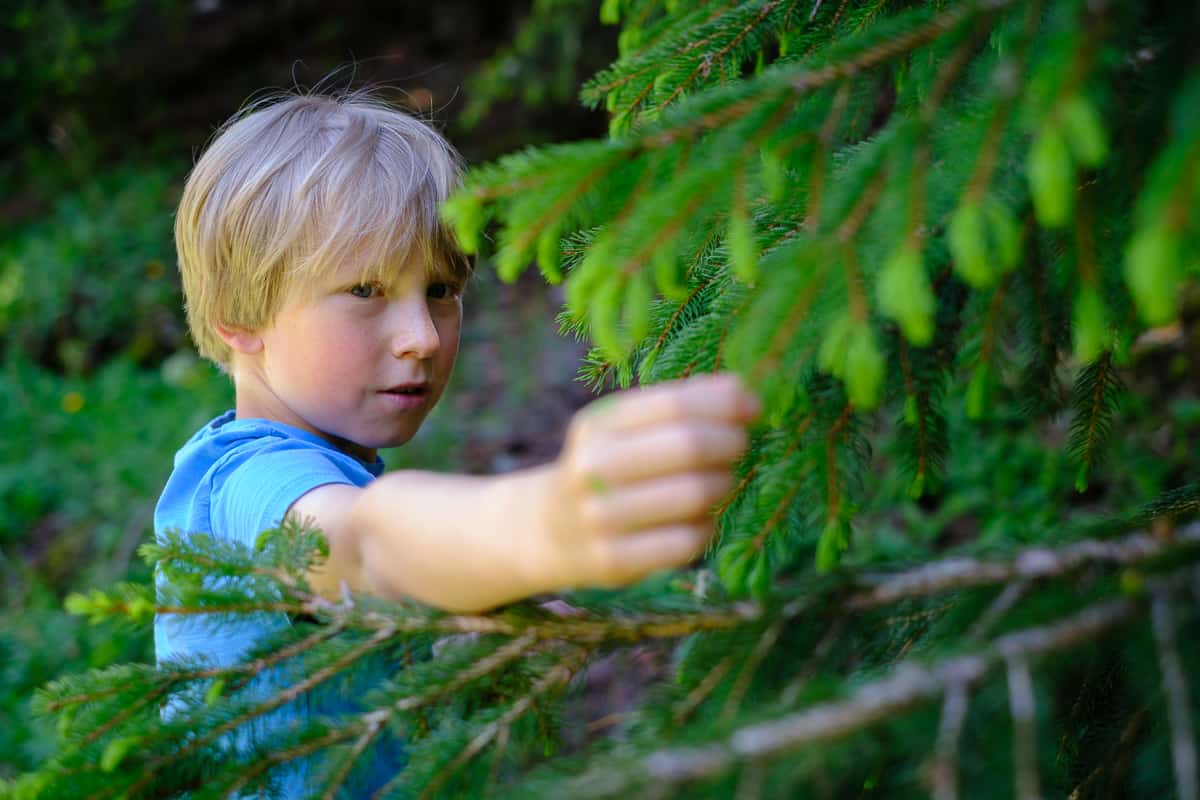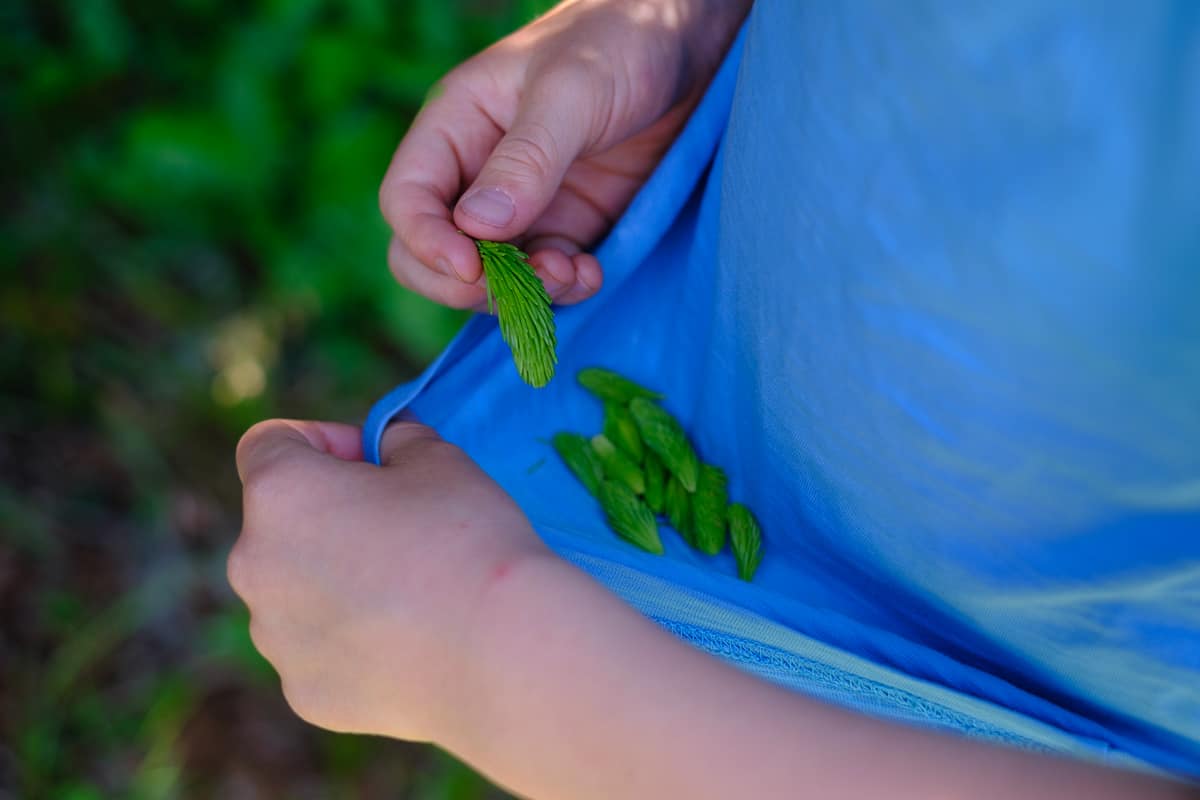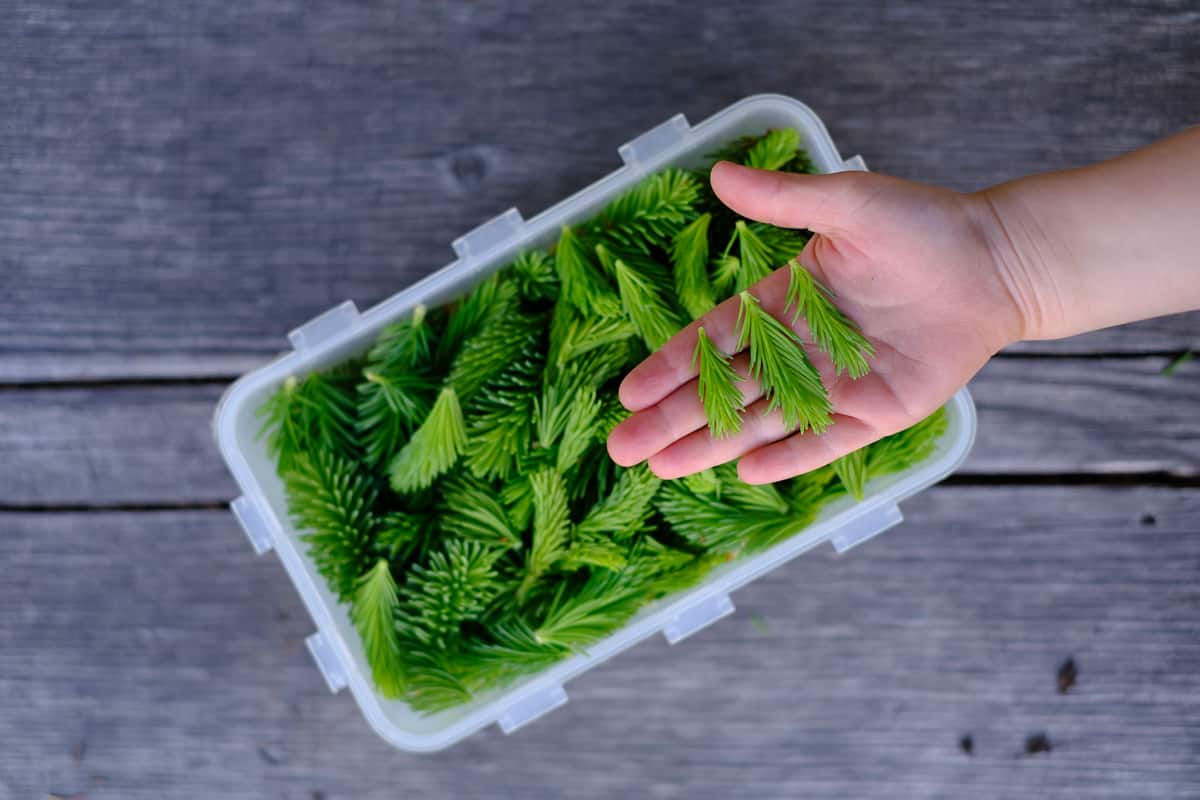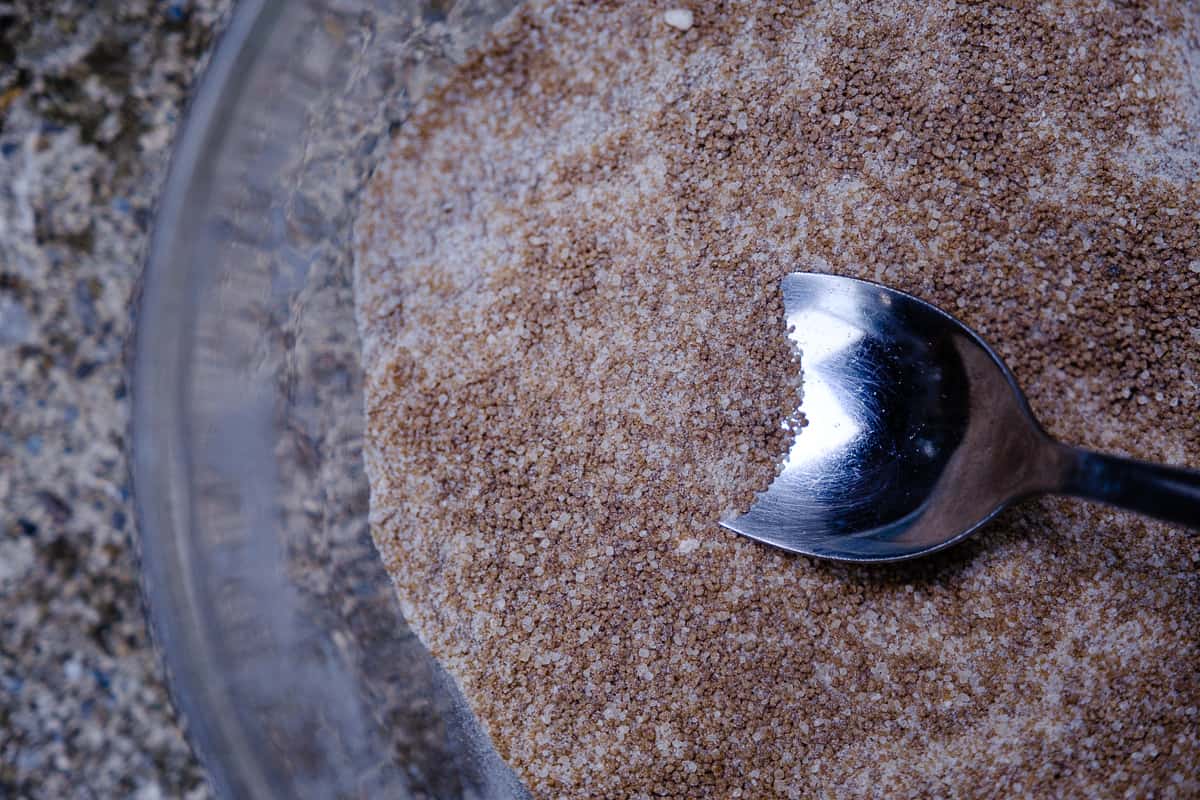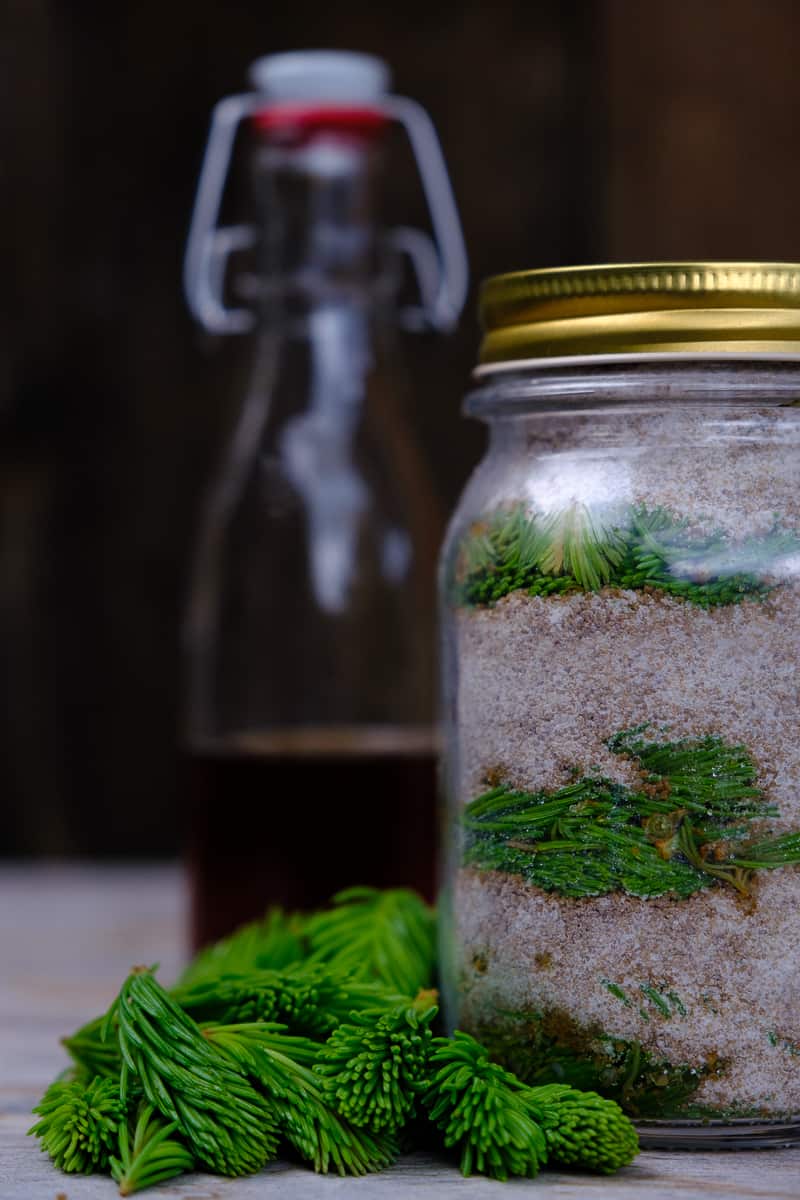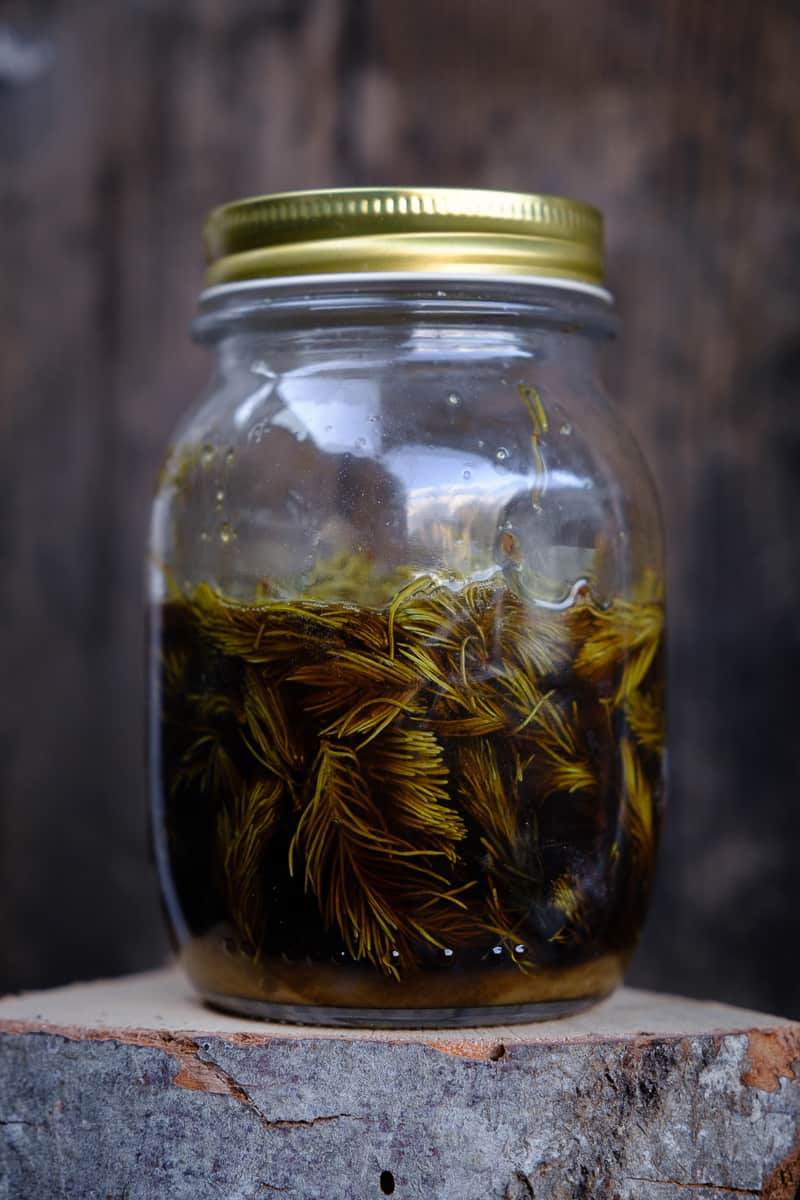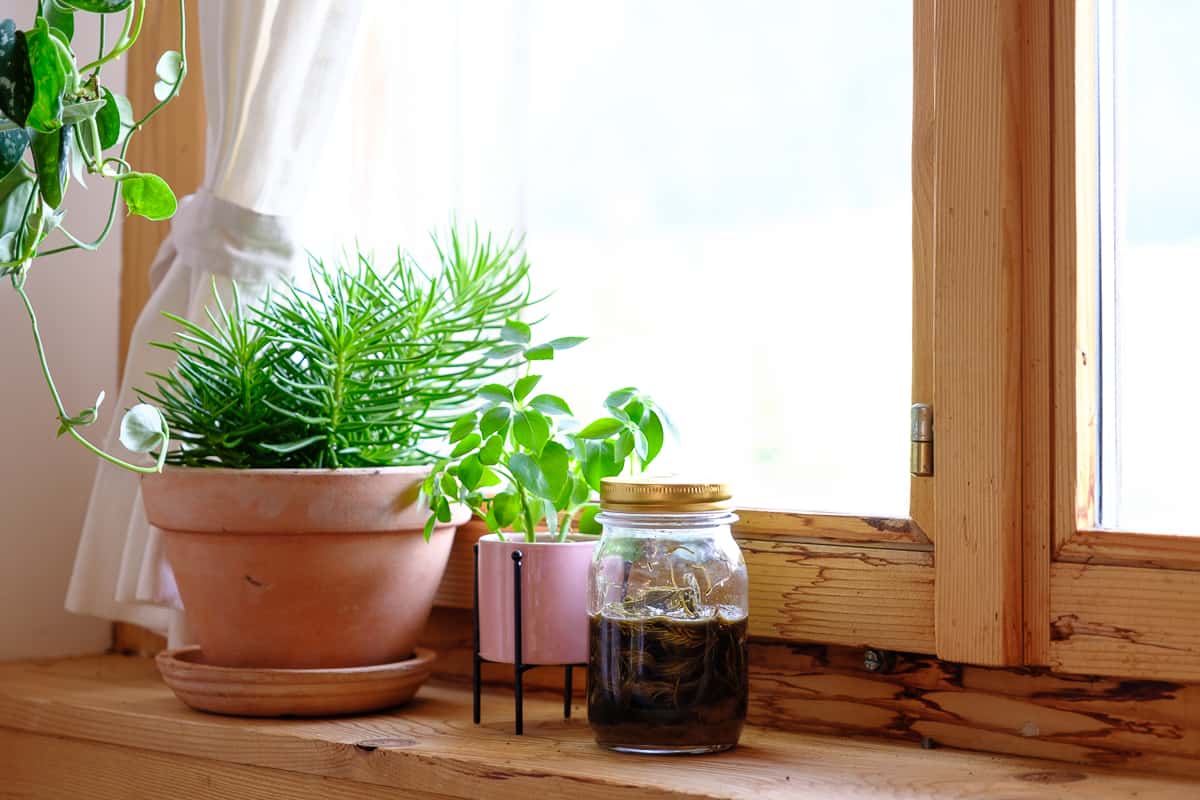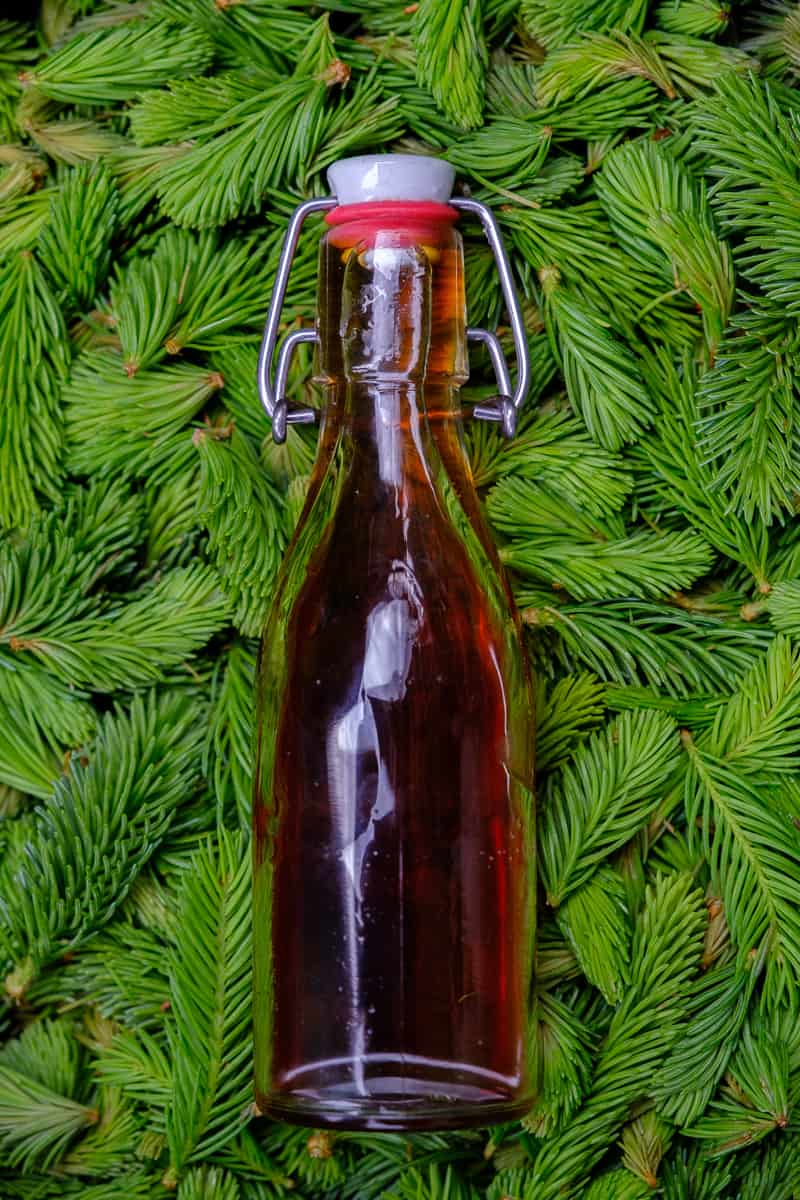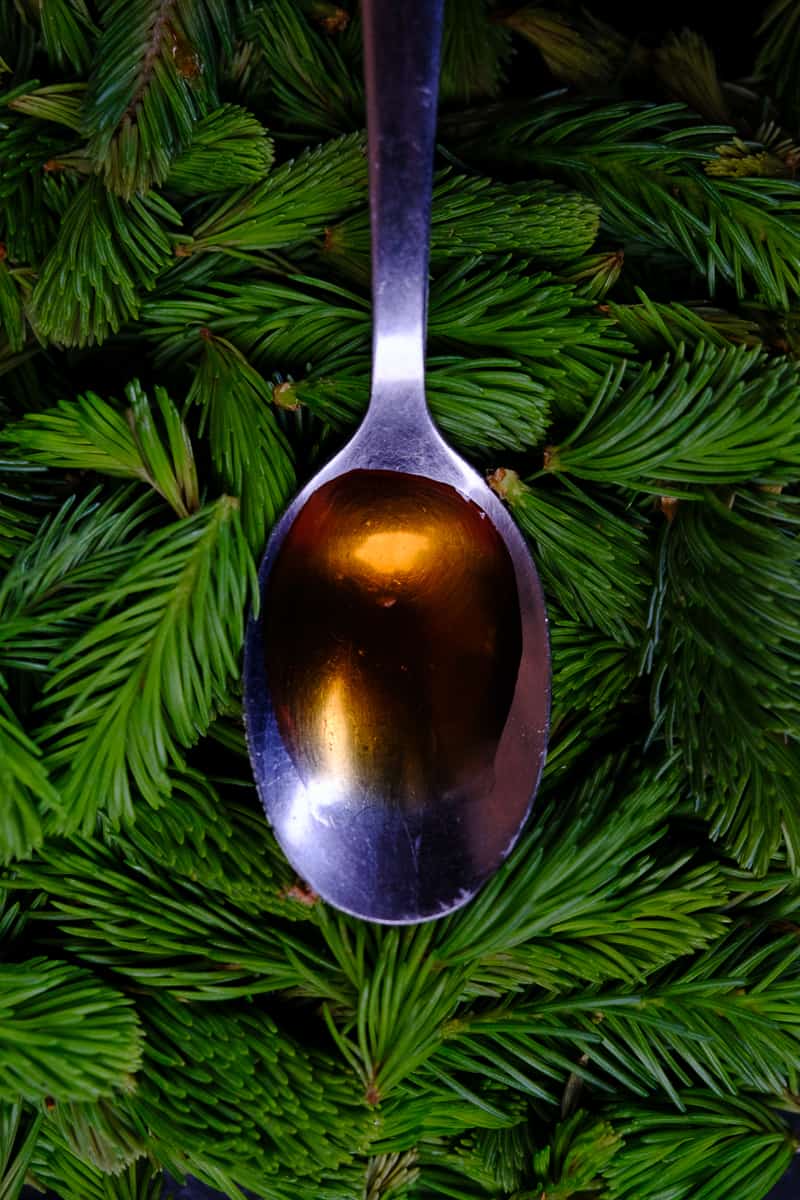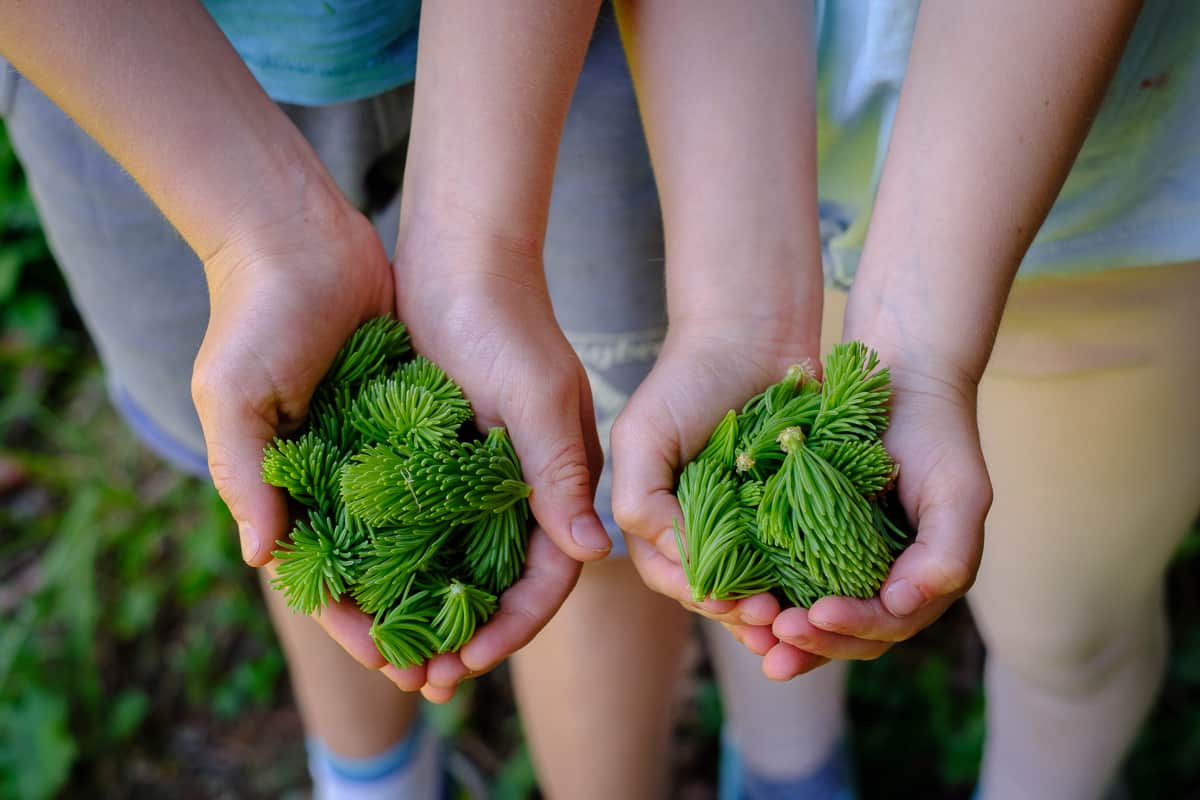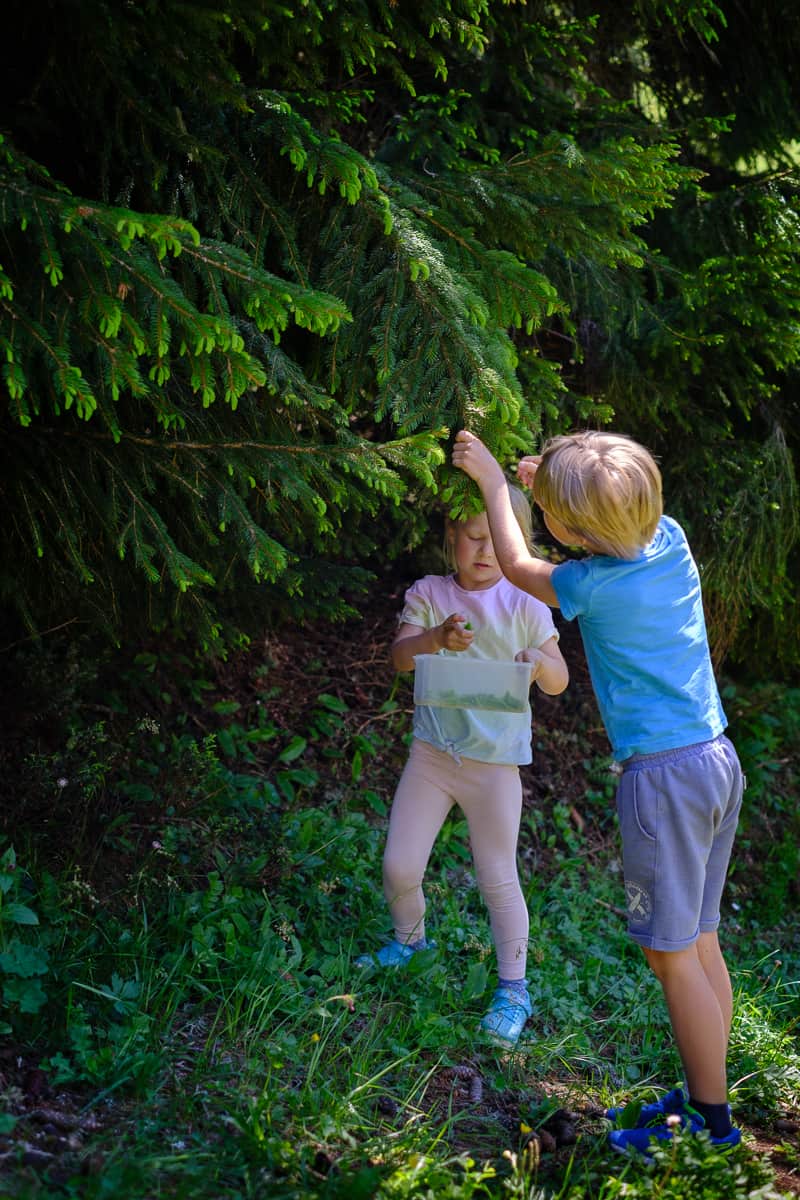Are you curious about foraging? Have you ever made anything edible with foraged materials you found in nature? Well, today’s post just may inspire you to get outside with your kids, collect a simple item from nature and then take it home to create a delicious simple syrup. Today, Sarah Warburton, photographer and mom of 2 living in the Swiss Alps, is here sharing advice on how to collect fir tree tips and make a forage tree tip syrup with your kids. She’s included the recipe, plus everything you need to know to get started on your foraging adventure!
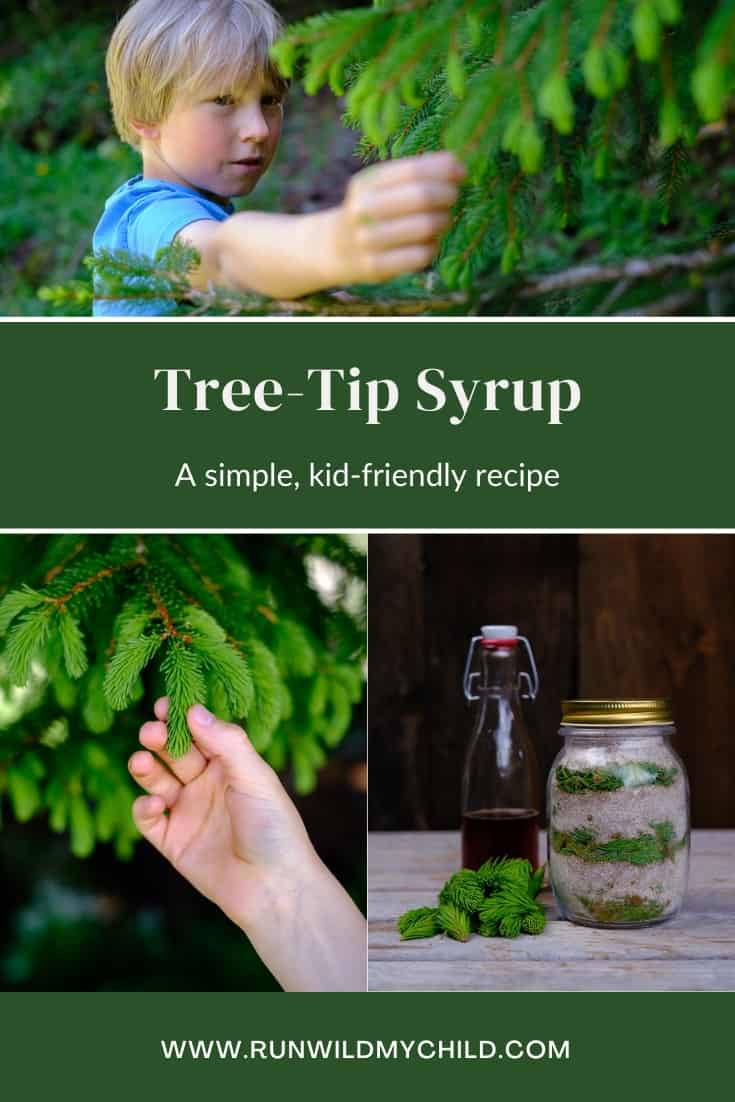
Foraged tree tip syrup
If, like me, you like to find simple but fun activities to motivate your kids to go hiking, then this tree tip syrup is for you! From foraging the fresh spring growth of fir, spruce or pine trees to making the syrup, the process is so easy that kids can do it all by themselves. Although traditionally used to soothe coughs and sore throats, the syrup also tastes amazing in both sweet and savory dishes and makes a useful and original gift.
Since discovering the recipe a few years ago, making this delicious, tangy syrup has become an annual tradition. My kids get excited and remind me of our activity as soon as they spot the bright green tips appearing on the trees in spring. They are always excited to scout out the best trees for harvesting, and armed with just a few basic supplies the syrup can even be prepared straight after foraging for the tips out on the trail. As the tips are generally plentiful and the process so simple, even younger children can proudly make their own jar.
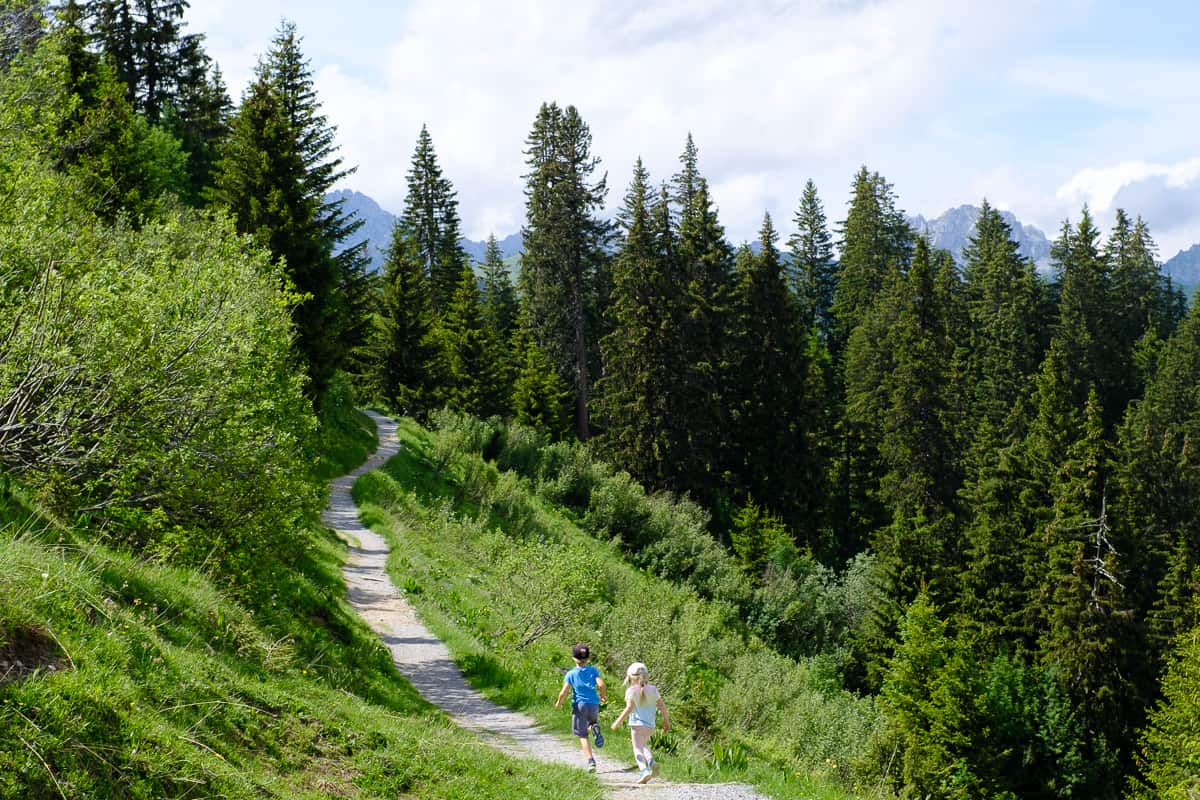
What you will need to make the syrup
- Something to collect the tips in – a tub, small basket, bag, etc.
- A glass jar with a tight-fitting lid (we use screw-top mason jars)
- Brown sugar
- Spoon
- Sieve
- A bit of time and patience!
Foraging conifers
Conifers are widely found in the forests of the temperate and sub-arctic climates of the Northern hemisphere. Did you know that spruce, fir, and pine trees all have edible needles, each with a slightly different taste. However, before eating anything wild, ALWAYS make sure you know how to identify exactly what it is that you’re foraging. This article on how to recognize the different conifer species will help you if you’re not sure what’s what!
Where to forage the tree tips
The tree’s new spring growth is used to make the syrup. As the weather warms up after winter the trees grow fresh needles at the end of each branch. The new growth is easy to spot – it’s bright lime green and much softer than the mature needles. This is the portion that you’ll forage to make your syrup.
How to choose trees for foraging
As with any kind of foraged food, select trees that are away from roads (at least 100m is best) and other sources of pollution. Also, be sure to check that you are outside of any protected zones and not on private land. Also be sure to spread out your foraging and not to collect everything you need from the same tree, in order to ensure you don’t put too much stress on the tree.
When to collect the tree tips
Here in our alpine region of Switzerland new growth starts to appear in early May, but latitude and altitude have an important role in determining the timing of this. This past year I left it a bit late to collect the tips in our immediate area, so we had to take a gondola up the mountain to find them. We were still able to find lots of tips at higher altitudes as late as the end of June but they were starting to get quite large. As a general rule, the younger the tips the better for this particular recipe.
Harvesting the tree tips
Now comes the fun part! My kids LOVE to have a ‘mission’ while they are outside and get really excited about finding the best trees and the nicest tips. If you are planning on making the syrup once you return home (rather than while out hiking), all you need to pack is a container to put them in.
Before we get started, I make sure to remind my kids how to forage responsibly. Removing the tree tips is essentially pruning the tree so aim to collect tips from several trees rather than one, and choose mature rather than young trees. It’s especially important to avoid removing the top tip of a young tree as this can stunt its growth.
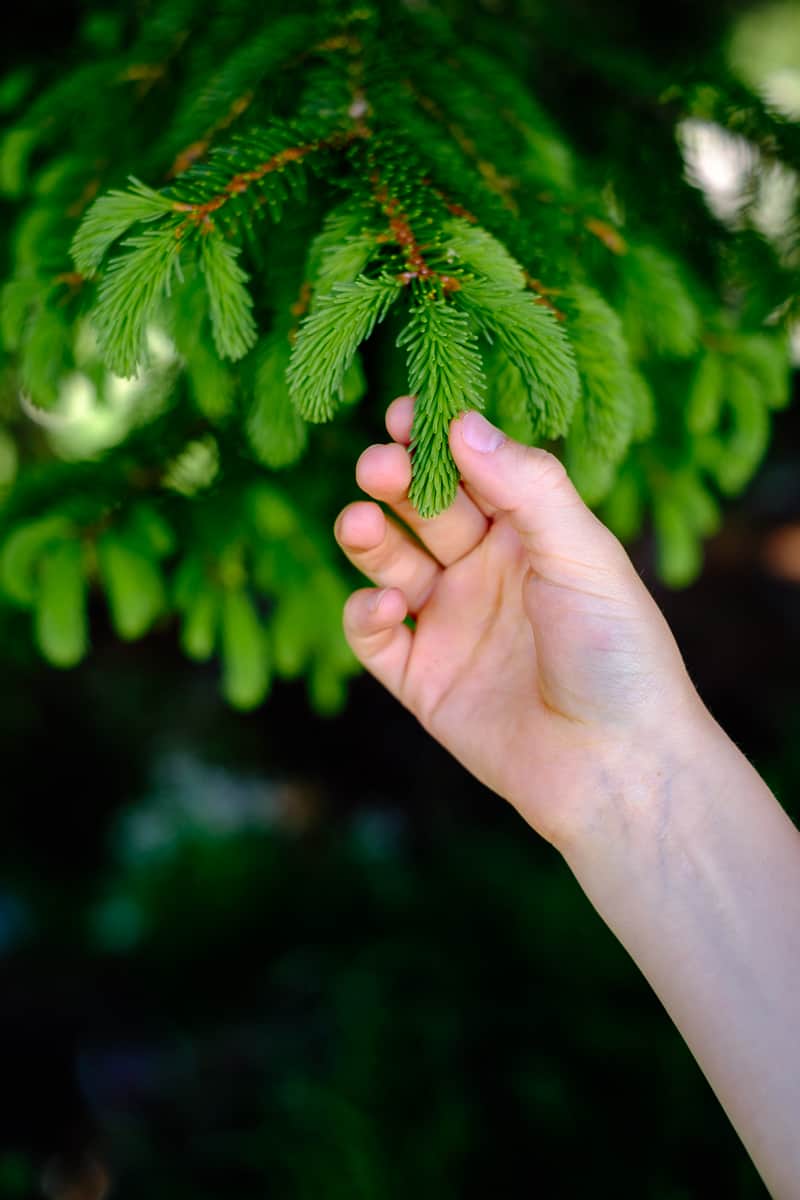
Tree tips are easy for young children to harvest
Plucking the tips off the trees is a straightforward process and even little hands can manage it. You don’t need scissors or any special equipment.
Select tips from the lower branches and make sure that you only take as many as you need. I find that if each child loosely fills the jar that they will eventually use to make the syrup this works out quite well. Once we’ve finished collecting the tips, we say thank you to the trees for sharing them with us.
Storing the foraged tree tips for later use
If you can’t prepare the syrup right away, then the tips store really well in the fridge or freezer. I have kept tips in the fridge for up to a month but freezing is best for longer-term storage. When refrigerated, keep the tips in a tub or a bag with a damp paper towel to ensure that they don’t start to dry out.
How to prepare the tree tip syrup
If we can, I like to plan to do prepare the tree tip syrup on the same day as collecting the tips while we’re still out hiking. Often we’ll find a spot for lunch and do it there. Bear in mind that to do this, you’ll need to carry the sugar and glass jars with you. This is only really practical if you aren’t hiking too far!
Start by putting a good layer of tree tips in the bottom of the jar. Follow this with a layer of brown sugar, and then repeat the process until you’ve completely filled the jar. Use a spoon to really pack down the layers, and finish with a thick layer of sugar on the top. Screw on the lid and voilà, you’re done!
Combining the sugar and the tree tips is so simple that even small children can do it by themselves. Pouring or spooning the sugar is great for exercising their fine motor skills. Try providing a variety of different brown sugars for an even more fun and tactile experience!
The best tasting tree tip syrup needs time
Once you’re home, place your jar(s) somewhere warm and wait for the magic to happen! A bright windowsill is perfect, but a warm cupboard such as an airing cupboard would work well too. The jar can also be left outside in the sun.
As the sugar melts, it draws out the natural moisture from the tree tips and gets infused with their aromatic goodness. After a week or so, most of the sugar should have melted and the contents of the jar will have reduced by about a half.
This is a good time to give the mixture a stir to break up any remaining lumps of sugar and push any stray tips down under the accumulating syrup. At this point, the jar doesn’t look very pretty as the tips will have discolored. But don’t worry about this – it’s perfectly normal!
We then wait at least another few weeks for more of the goodness to leach out of the tips but some traditional recipes call for waiting months or even up to a year!
Bottling and storing the tree tip syrup
When you’re ready to bottle the syrup, simply strain off the tree tips with a sieve, using a spoon to squeeze out all of the beautiful, fragrant liquid. Discard the spent tips, and pour the syrup into clean glass bottles or jars.
You can also boil the syrup before bottling or can the jars in a water bath to increase its shelf-life. For ultimate freshness and flavor, store the syrup in the fridge. Failing that, a cool, dark cupboard is best. Reports vary as to how long it can be kept, but as it’s pretty much pure sugar it’s very shelf-stable.
How to use tree tip syrup
The first bottle of tree tip syrup that we made we used exclusively as a natural remedy to soothe coughs and sore throats. It’s safe to say we had no problem convincing the kids to take it! Soon I began looking into how else it could be used.
Here are a few suggestions on ways to use evergreen tree tip syrup:
- drizzle over cheese (my personal favorite – soft cheese and goat’s cheese were made for this!)
- pour a little over your favorite pancakes
- glaze or marinate meat, fish, or vegetables
- add a spoonful to a hot herbal tea
- sweeten cold drinks and cocktails – mix with still or sparkling water and add a splash of lemon juice for an easy summer drink
Small bottles also make an interesting homemade gift for friends, neighbors, teachers, or family members. Your children will be so proud to gift a bottle of something they worked to make.
The health benefits of tree tip syrup
There are so many amazing benefits of foraging conifers and evergreen trees. The needles and cones of conifers have traditionally been used for medicinal purposes by Native Americans and Eastern and Northern Europeans. The needles contain potassium and magnesium and are a potent source of Vitamins A and C.
Using alternate sugars for making the syrup
It’s entirely possible to replace the brown sugar with honey or maple syrup. The ratio of tips to sugar would need adjusting to account for the difference in water content. This is not something that I myself have tried but I have heard that the result is equally delicious!
Other uses for foraged conifer tips
If you have tree tips left over after making the syrup, don’t throw them away! The tips can be used to garnish a variety of dishes, eaten raw in salads, and even pickled! There are so many amazing uses for your foraged finds!
Have you tried making tree tip syrup?
What’s your favorite way to use it?

About the author
Sarah is originally from the UK but moved to Switzerland 14 years ago and never looked back! She lives with her Swiss partner and 2 children, aged 8 and 5, in a beautiful corner of the Swiss Alps. Together they run a large chalet and are kept busy looking after the groups and guests that stay there. Sarah enjoys anything that gets herself and her family out into nature. Skiing, hiking, and paddling on local lakes are favourite family activities, and annual camper van trips are always highlights of the year. Hugely inspired by the landscapes around her, she loves nothing more than taking her camera along to photograph or film their adventures and capture all the beautiful details of the natural world around them.
Find Sarah online in the following locations:
Instagram: @swissmountainlife
Website: www.sarahbach.ch
Chalet: @bnbvieuxchalet

